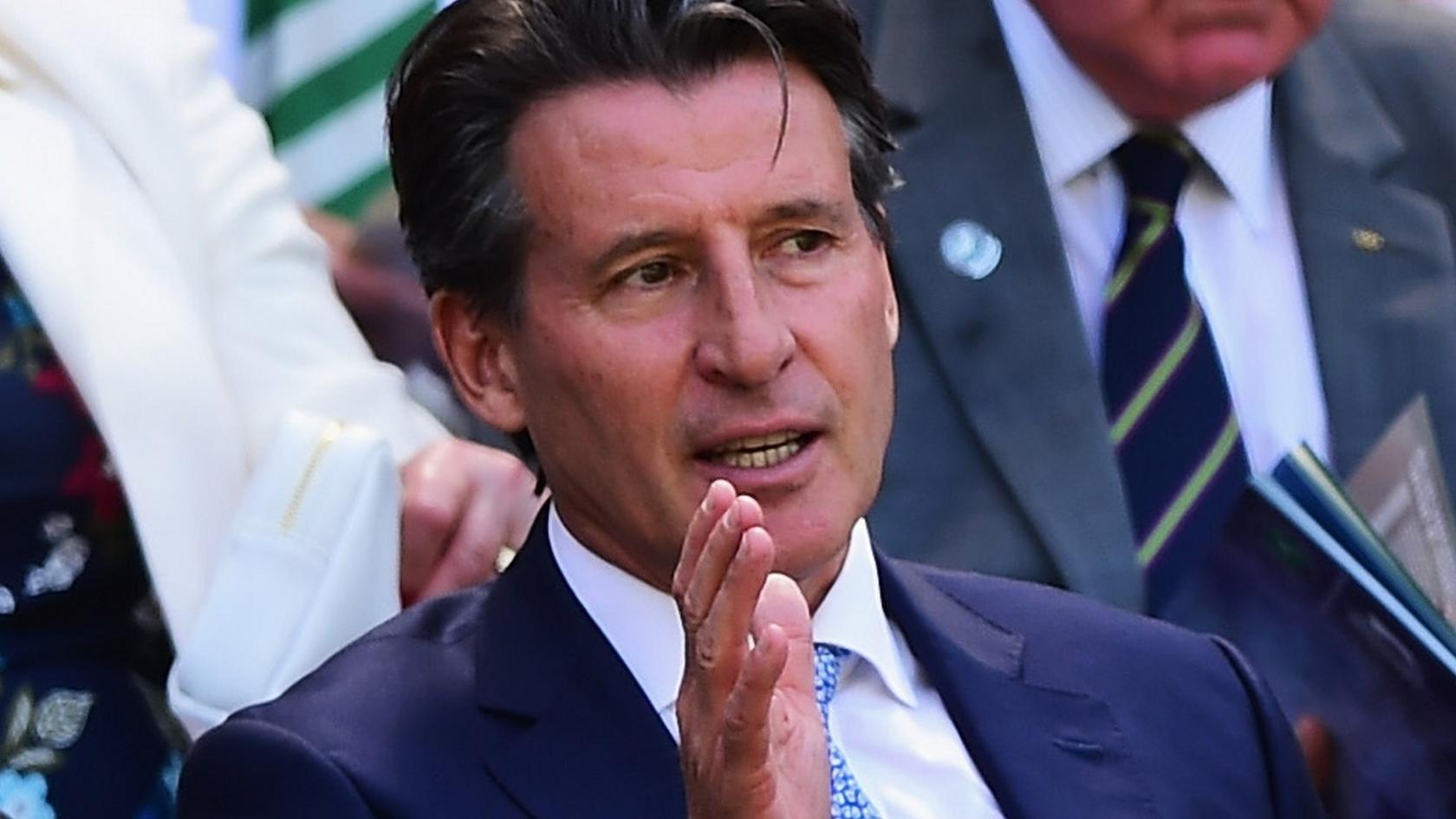Banned drugs found in 3,800 samples in 2014, says Wada
- Published
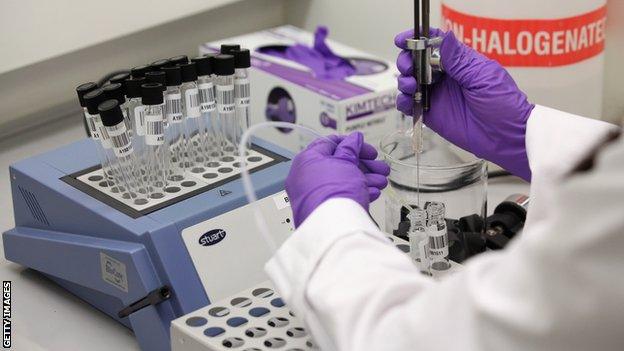
Banned substances were found in sports including bridge and darts
Banned substances were found in more than 3,000 samples out of 283,304 tests carried out worldwide last year, World Anti-Doping Agency figures, external reveal.
However, that represented a fall, across all sports, of more than 10%, despite an increase in the number of tests carried out.
Athletics has been the subject of allegations of widespread doping.
And Wada has told the BBC more than 10% of elite athletes could be using performance-enhancing drugs.
August's athletics World Championships in Beijing included 66 competitors, external who had previously been subject to doping sanctions.
Athletics' governing body, the International Association of Athletics Federations (IAAF), carried out more than 1,400 tests on 878 athletes - almost half of the total number of competitors - in China. Just two - Kenyan runners Joyce Zakary and Koki Manunga - failed them, although the IAAF said samples would be frozen and stored for future reanalysis as science and technology progressed.
These are not included in the Wada figures, which relate to 2014.
As well as the reduction in samples containing banned substances - or 'adverse analytical findings' - in 2014, the number of tests requiring further investigation also fell. In contrast, the number of adverse findings had increased by more than 10% between 2012 and 2013.
Wada says the fall in these 'atypical findings' is partly due to the introduction of the athlete biological passport., external
Wada's results report the number of tests carried out by sport governing bodies and national anti-doping organisations submitted to its 32 accredited laboratories worldwide.
A blood or urine sample showing a banned substance does not automatically mean the athlete in question has been doping. Some prohibited substances can be produced naturally by the body, for example.
The findings in brief
In total, 283,304 samples were analysed by Wada-accredited laboratories across Olympic and non-Olympic sports, compared with 269,878 in 2013.
Adverse findings were returned for 3,153 samples.
Football was the sport that carried out the most tests last year, with 144 samples out of 31,242 taken detecting banned substances.
Among other Olympic sports, aquatics (12,120), athletics (25,830) and cycling (22,471) performed the most tests, while equestrian (1.8%), golf (1.6%) and weightlifting (1.9%) had the highest rate of adverse findings.
Banned substances were found in a diverse range of sports including bridge and darts.
The geography of anti-doping
Most tests by national anti-doping organisations |
|---|
China: 13,180 |
Russia: 12,556 |
Germany: 9,073 |
France: 7,434 |
United States: 7,167 |
Italy: 6,506 |
Wada's 2014 report reveals which national anti-doping authorities test their athletes most frequently - though it does not include figures on the number of active competitors by country.
The Chinese Anti-Doping Agency, perhaps unsurprisingly given the country's population, took the most samples of any, with 0.4% of the 13,180 samples taken detecting banned substances, while Russia's also took more than 10,000 samples last year.
UK Anti-Doping,, external the body responsible for testing British sportsmen and sportswomen, analysed 5,160 samples with 0.7% recording adverse findings.
In contrast, the Jamaican Anti-Doping Commission, which was rebuked by Wada for its approach in 2013,, external conducted 347 tests - all coming back clean - while the National Anti‐Doping Centre of Ukraine collected just two samples, one of which showed a banned substance.
Which sport carried out the most tests?
Olympic sports that collected the most samples in 2014 | ||
|---|---|---|
Sport | Samples collected | Adverse findings |
Football | 31,242 | 144 (0.5%) |
Athletics | 25,830 | 261 (1%) |
Cycling | 22,471 | 221 (1%) |
Aquatics | 12,120 | 57 (0.5%) |
Weightlifting | 8,806 | 169 (1.9%) |
Rugby | 6,961 | 57 (0.8%) |
Football was responsible for 31,242 tests, more than any other sport. Of those, 144 (0.5%) produced adverse findings.
Athletics provided more than 25,000 samples analysed in 2014 - 1% of those tests resulted in adverse findings.
Boxing recorded 1.3% adverse results from just over 4,000 tests.
There were also adverse findings in sports less commonly associated with banned substances.
Para-sailing had one of the highest rates of adverse results, with 13%, although that figure is skewed by the relatively small number of participants in the sport with just 24 samples taken and three adverse findings.
Of the non-Olympic or non-Paralympic sports, 13.7% of samples collected in body building contained banned substances.
Olympic sports that collected the fewest samples in 2014 | ||
|---|---|---|
Sport | Samples collected | Adverse findings |
Curling | 306 | 1 (0.3%) |
Luge | 444 | 1 (0.2%) |
Golf | 507 | 8 (1.6%) |
Equestrian | 619 | 11 (1.8%) |
Modern pentathlon | 665 | 4 (0.6%) |
Sailing | 795 | 2 (0.3%) |
Which drugs were most commonly found?
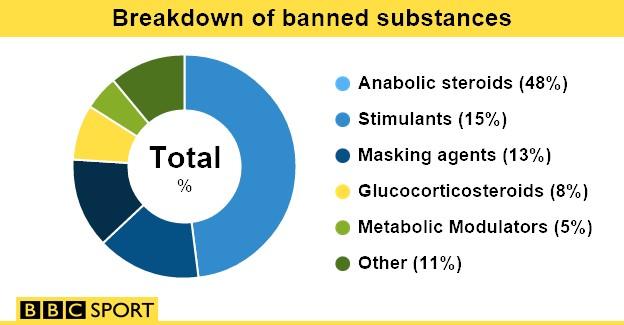
Nicole Sapstead, chief executive officer for UK Anti-Doping, said: "Our analytical findings show an increase in steroid use, which to me indicates there may an increase of prevalence in a more general public, societal way. It is something we are very keen to engage with in our education programme and help because it is not purely about a doping issue or a sport issue."
Are findings an accurate picture?
Recent allegations have claimed doping to be much more prevalent than Wada's failed test statistics imply - especially in athletics. Last December a documentary broadcast in Germany suggested 99% of Russian athletes had used prohibited substances.
Wada director-general David Howman has told the BBC that the body's estimate of the level of cheating varied between sports.
"We have some guestimates based on some research undertaken over the last years," he said.
"It's far more than we would wish it to be - over 10%. That is of concern because those being caught by the system is far lower than that. Not in all sports, in some sports."
Hamish Coffey, head of testing for UK Anti-Doping, said: "Our aim in the UK is not to be focused primarily on the numbers but more about the quality, which is where our intelligence-led operations come in.
"The reality is there will always be athletes who are determined to cheat and looking at ways of evolving their techniques, which leads to challenges for us. It is important we match that and continue trying to evolve our techniques to keep up with them."
- Published4 October 2015
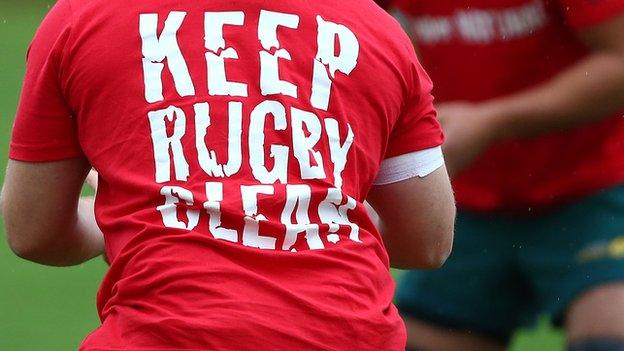
- Published20 August 2015
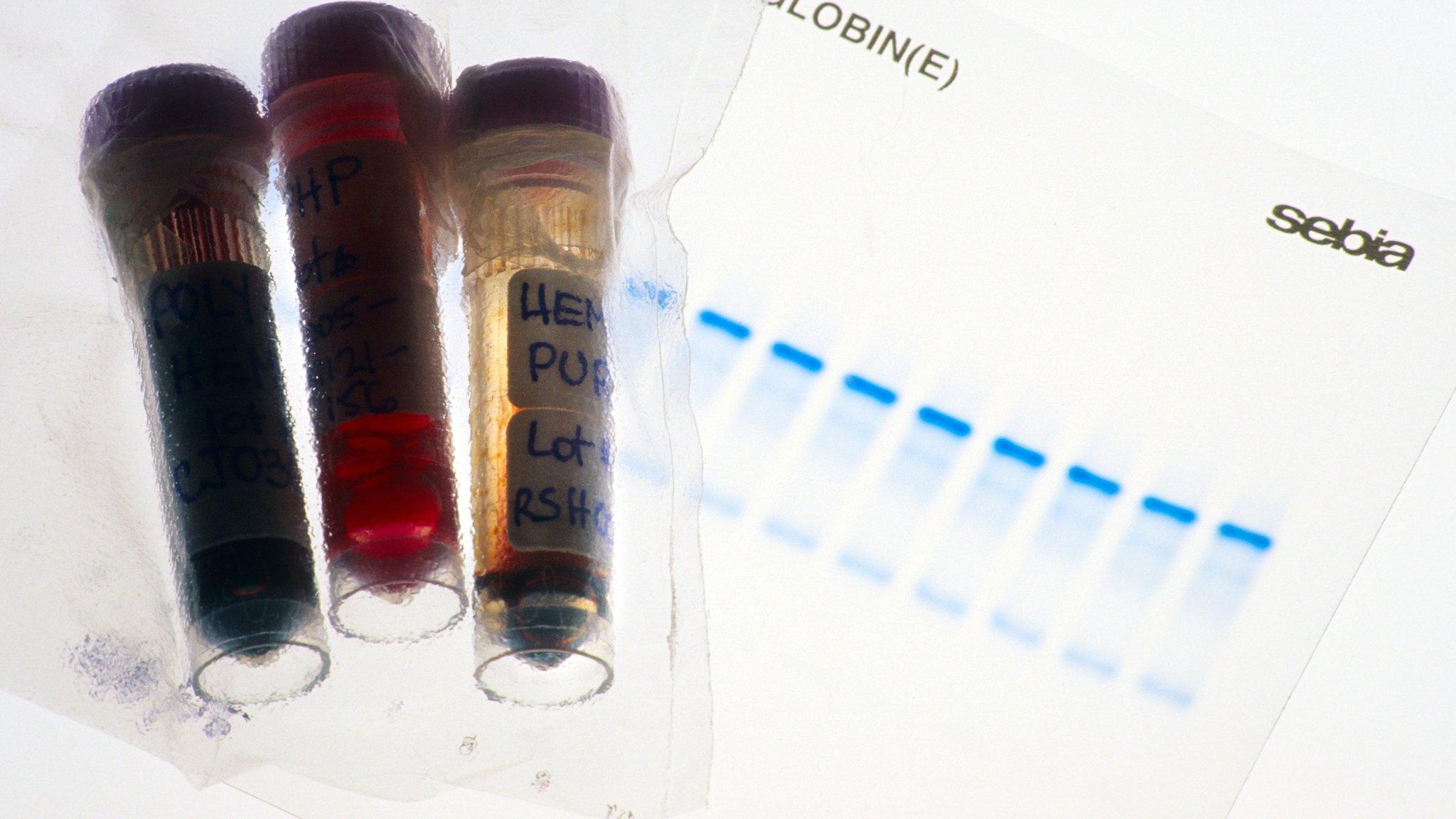
- Published16 August 2015
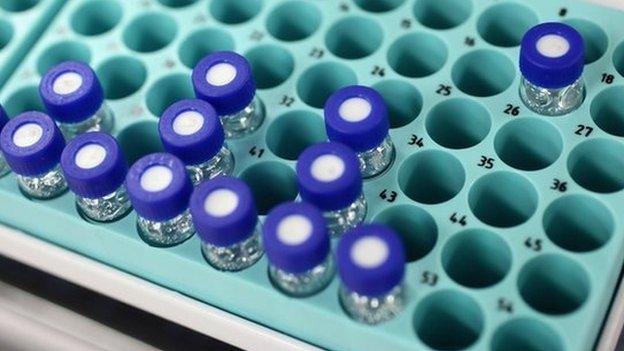
- Published13 August 2015
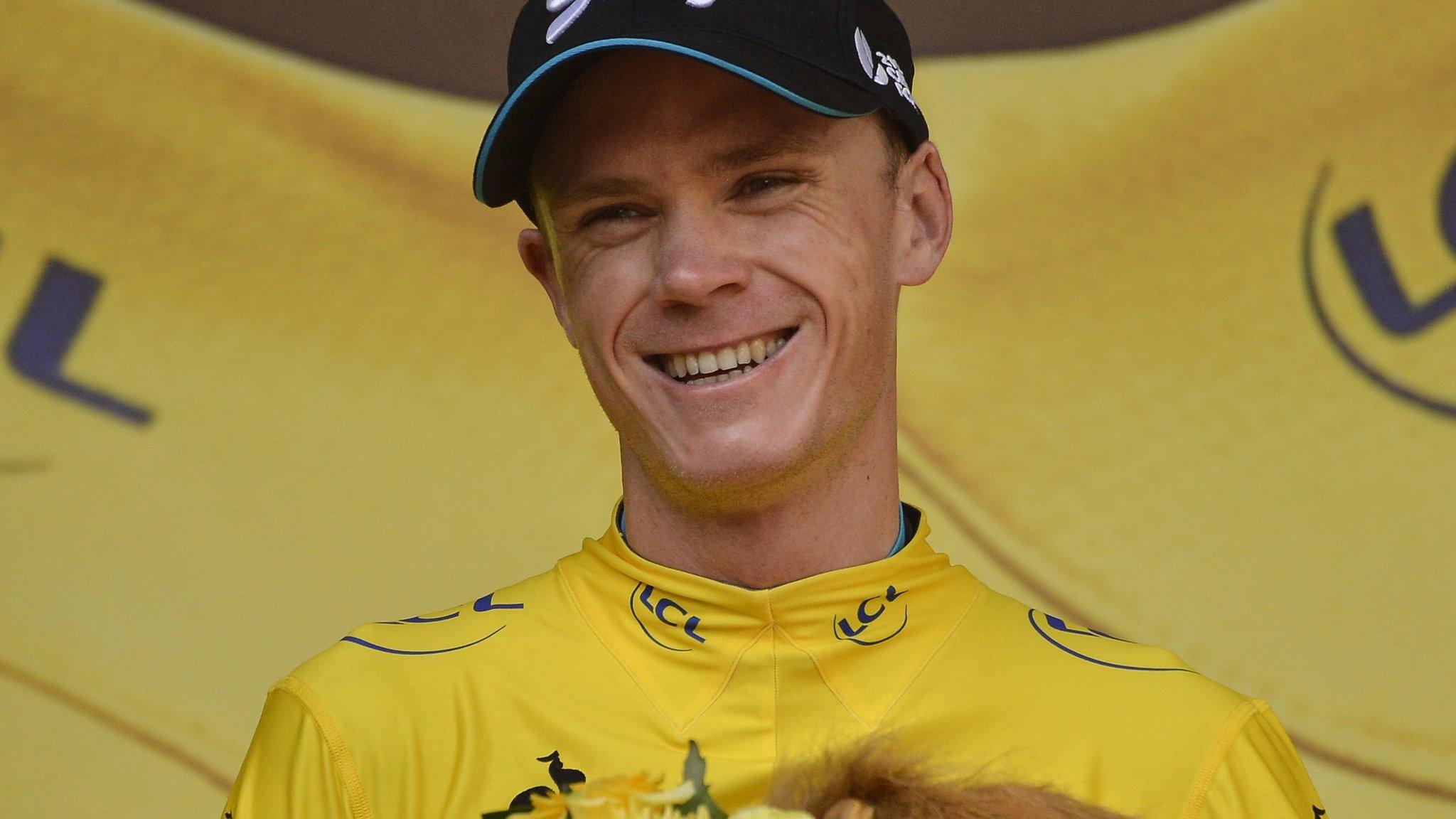
- Published11 August 2015

- Published2 August 2015
